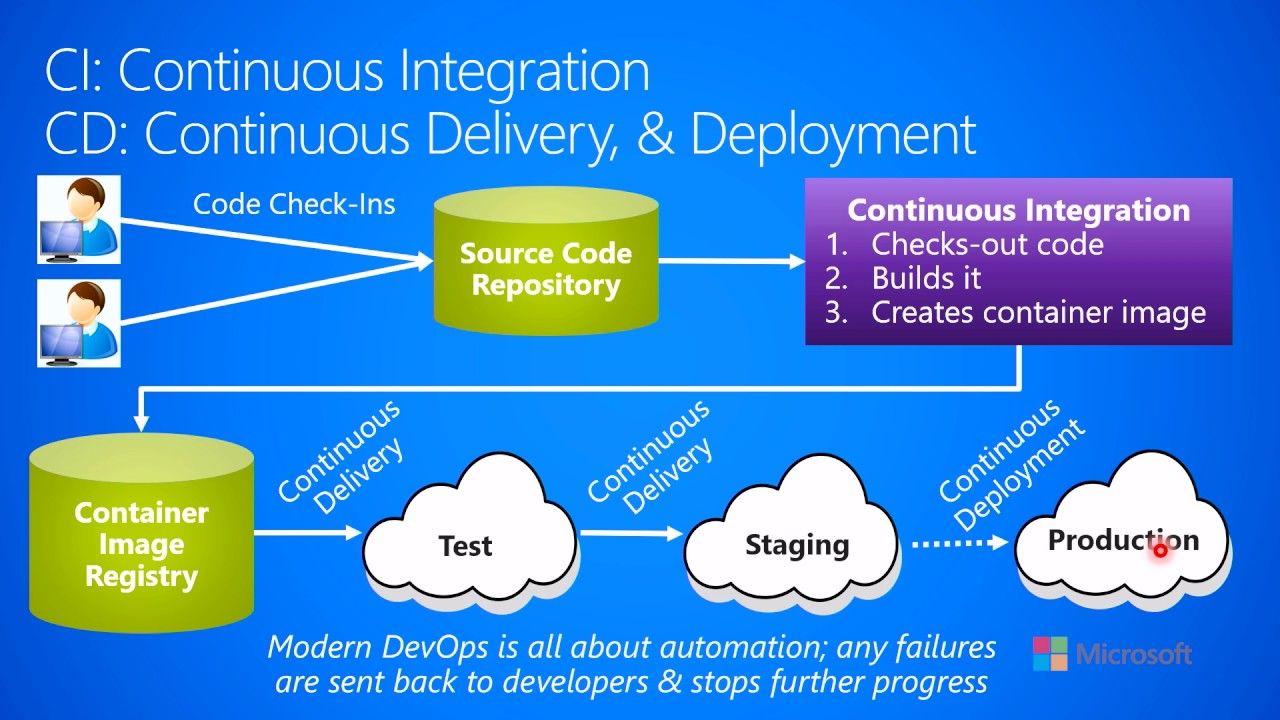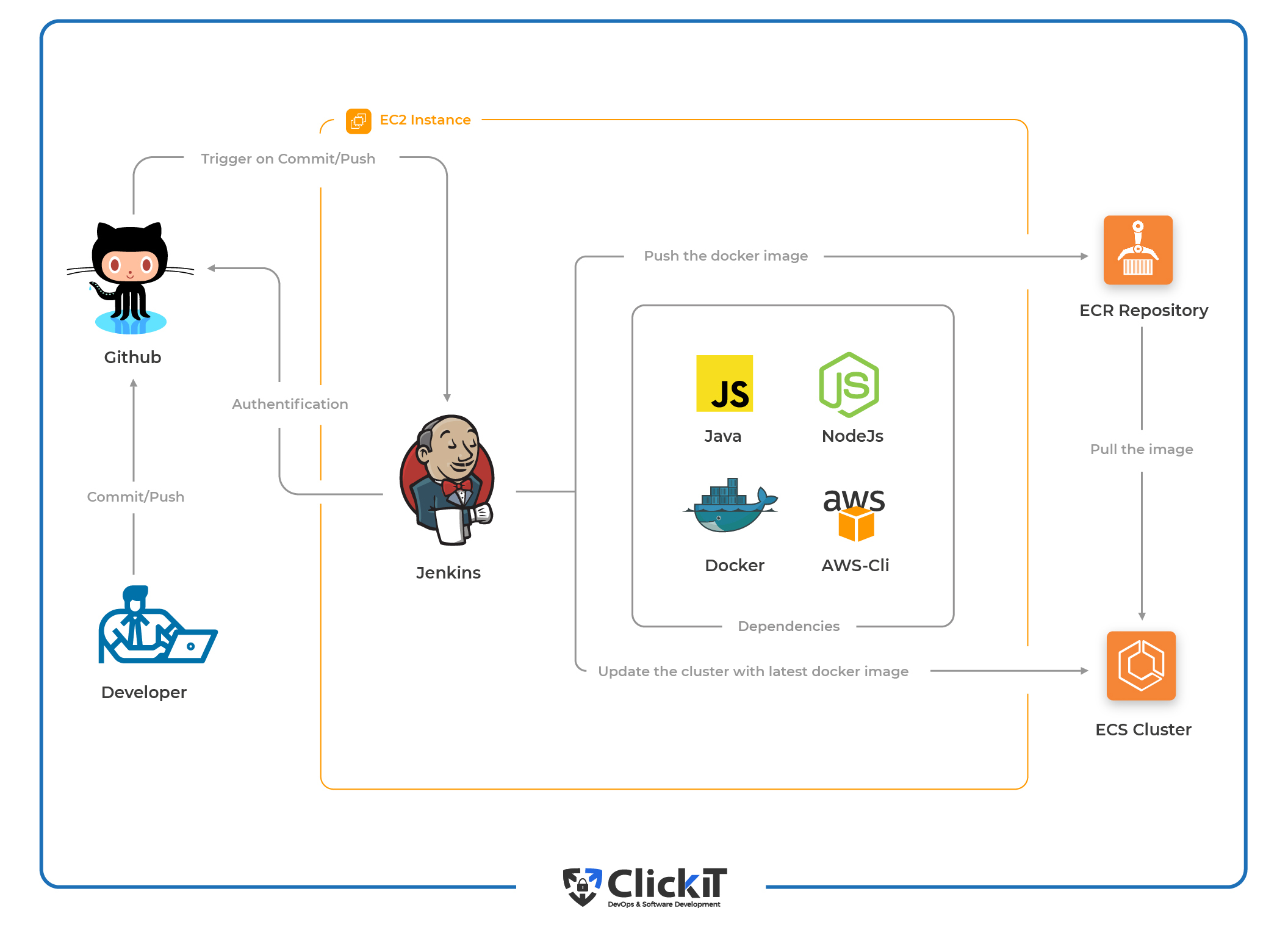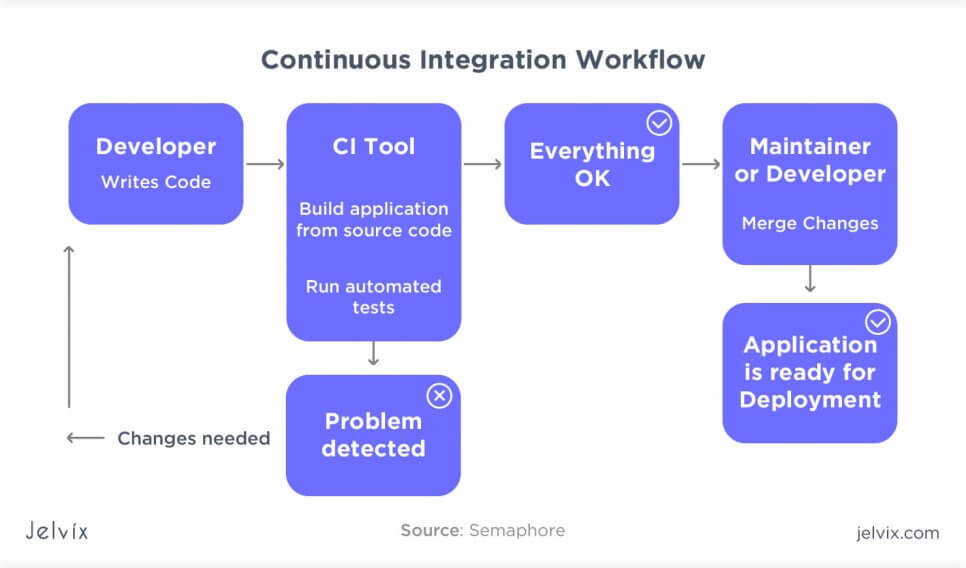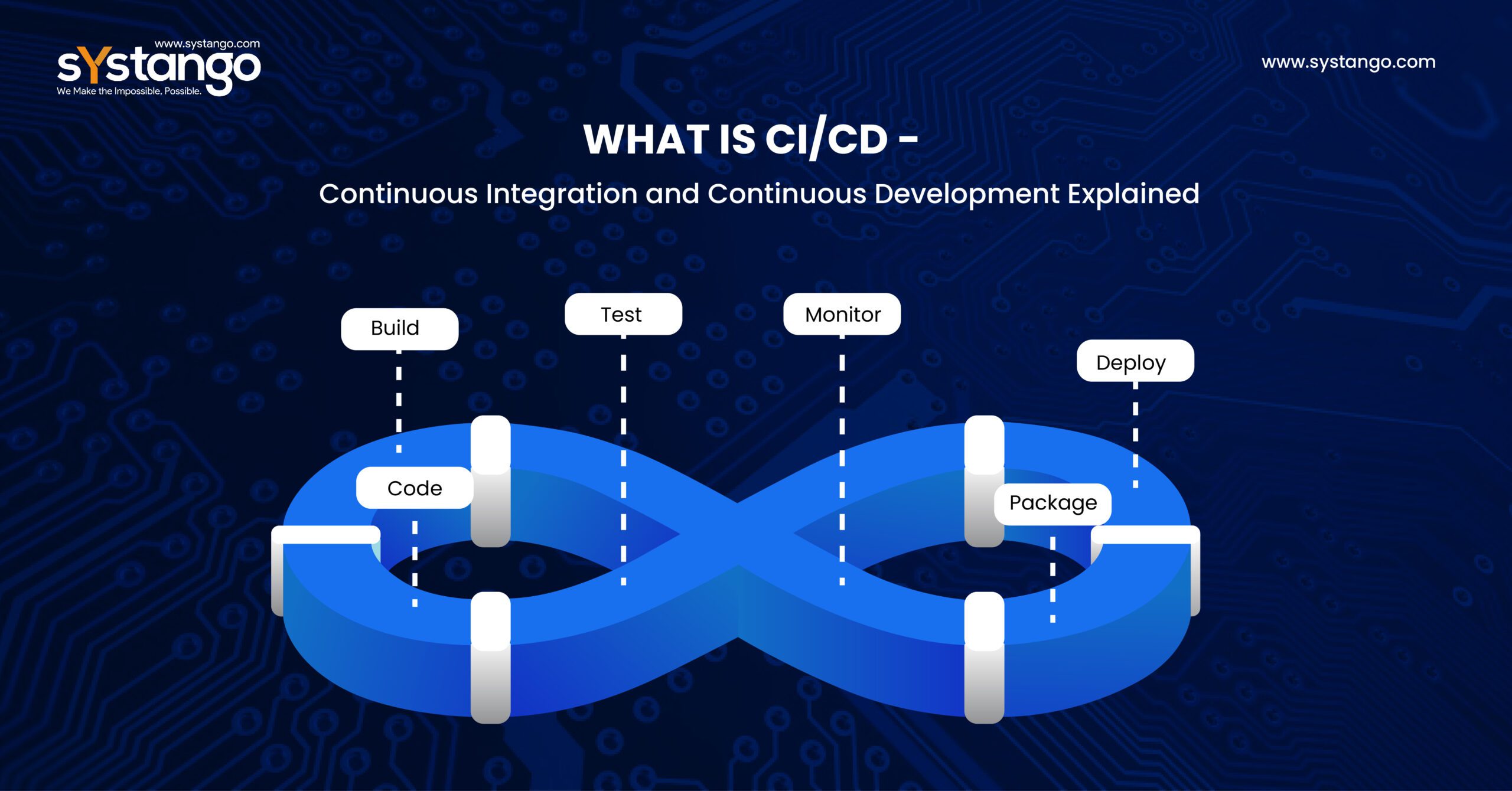Continuous Integration and Continuous Deployment (CI/CD): A Modern Approach to Software Development
In today’s fast-paced tech landscape, software development teams are constantly seeking ways to improve efficiency, reduce errors, and accelerate time-to-market. One such approach is Continuous Integration and Continuous Deployment (CI/CD), a set of practices designed to automate and streamline the software development workflow. By focusing on ci cd benefits, teams can reap numerous advantages that contribute to their overall success.
CI/CD emphasizes the importance of automation, collaboration, and rapid deployment. Automation reduces the manual effort required to build, test, and deploy software, thereby minimizing human error and freeing up developers to focus on more strategic tasks. Collaboration fosters a shared understanding of the development process, enabling teams to work more effectively together and reducing integration issues. Rapid deployment, meanwhile, ensures that new features and bug fixes reach end-users quickly, driving customer satisfaction and fostering a culture of continuous improvement.
The Role of CI/CD in Streamlining Development Workflows
CI/CD plays a crucial role in streamlining development workflows, enabling developers to manage code changes more effectively and reduce integration issues. By automating repetitive tasks and facilitating seamless collaboration between team members, ci cd benefits contribute significantly to accelerating the release process.
Automating repetitive tasks, such as code compilation, testing, and deployment, is a key advantage of CI/CD. This automation not only saves time but also reduces the risk of human error, ensuring consistent and reliable results. Automated testing, in particular, helps catch bugs and issues early in the development cycle, minimizing the need for costly and time-consuming fixes later on.
Seamless collaboration is another significant benefit of CI/CD. By integrating code changes frequently, developers can quickly identify and address conflicts, ensuring that the codebase remains up-to-date and stable. Version control systems, such as Git, enable teams to track changes, revert to previous versions, and maintain a single source of truth for the project. Furthermore, real-time collaboration tools, like those offered by GitLab and GitHub, facilitate communication and knowledge sharing among team members, fostering a collective understanding of the project’s progress and requirements.
Improving Software Quality with Continuous Integration
Continuous Integration (CI) is a critical component of the CI/CD pipeline, playing a significant role in enhancing software quality, reducing bugs, and catching errors early in the development cycle. By automating various aspects of the integration process, ci cd benefits contribute to a more efficient and reliable software development workflow.
Automated testing is one of the primary advantages of continuous integration. By automatically testing code changes as they are integrated, developers can quickly identify and address issues, ensuring that the codebase remains stable and functional. This early detection of bugs and errors helps reduce the overall cost and effort associated with fixing issues later in the development process. Additionally, continuous integration supports various testing methodologies, such as unit testing, integration testing, and end-to-end testing, providing comprehensive coverage for the application.
Code review is another essential aspect of continuous integration, enabling developers to maintain high coding standards and share knowledge across the team. Automated code review tools, such as those offered by GitLab and GitHub, can analyze code for potential issues, security vulnerabilities, and adherence to coding standards. Manual code reviews, on the other hand, allow team members to provide feedback, suggest improvements, and learn from one another’s expertise. By combining automated and manual code reviews, teams can ensure that their code is not only functional but also maintainable, scalable, and secure.
Version control is a fundamental practice in software development, and continuous integration builds upon this foundation by integrating code changes frequently and automatically. By using version control systems, such as Git, developers can track changes, revert to previous versions, and maintain a single source of truth for the project. Continuous integration amplifies these benefits by ensuring that the codebase remains up-to-date and stable, reducing the risk of conflicts and integration issues.
Accelerating Time-to-Market with Continuous Deployment
Continuous Deployment (CD) is a key aspect of the CI/CD pipeline, designed to accelerate time-to-market, increase customer feedback, and enable quicker innovation. By automating the deployment process and adopting strategies like infrastructure as code and blue/green or canary releases, ci cd benefits contribute to a more efficient and agile software development workflow.
Automated deployment is a primary advantage of continuous deployment. By automating the process of deploying code changes to production, teams can significantly reduce the time and effort required to release new features and bug fixes. Automated deployment also minimizes the risk of human error, ensuring consistent and reliable results. Tools like Ansible, Terraform, and AWS CloudFormation enable infrastructure as code, allowing teams to manage and deploy infrastructure configurations in a version-controlled and automated manner.
Blue/green and canary release strategies are innovative approaches to continuous deployment, designed to minimize downtime, reduce risk, and gather valuable customer feedback. Blue/green releases involve deploying a new version of the application alongside the existing version, with traffic gradually shifted to the new version. This approach allows teams to quickly roll back to the previous version if issues arise. Canary releases, on the other hand, involve deploying a new version to a small subset of users, gradually increasing the number of users as confidence in the new version grows. This strategy enables teams to gather feedback and identify issues early, ensuring a high-quality user experience.
Continuous deployment not only accelerates time-to-market but also fosters a culture of rapid iteration and improvement. By enabling faster release cycles, teams can more easily incorporate customer feedback, address issues, and innovate. This agility contributes to a more responsive and competitive software development process, ultimately leading to increased customer satisfaction and long-term success.
Embracing DevOps Culture: Collaboration and Communication
CI/CD is not just about tools and processes; it also encompasses a cultural shift towards collaboration, communication, and shared responsibility between development and operations teams. Embracing DevOps practices can significantly enhance the benefits of ci cd benefits, fostering a culture of continuous learning and improvement in modern software development projects.
DevOps emphasizes the importance of collaboration and communication between development and operations teams, breaking down silos and encouraging a shared understanding of project goals, requirements, and challenges. By promoting cross-functional teams, organizations can ensure that developers, operations professionals, and other stakeholders work closely together, leveraging their unique expertise to achieve common objectives.
Shared responsibility is another critical aspect of the DevOps culture. By empowering teams to take ownership of their work, organizations can foster a sense of accountability and commitment to the project’s success. This shared responsibility encourages teams to proactively identify and address potential issues, ensuring that the software development process is both efficient and effective.
Continuous learning and improvement are core principles of the DevOps culture. By embracing a growth mindset, teams can continually refine their processes, tools, and skills, adapting to changing requirements and technologies. Regular retrospectives, knowledge sharing, and skills development initiatives can help teams stay up-to-date and maintain a competitive edge in today’s fast-paced tech landscape.
In summary, the cultural aspects of CI/CD are essential for maximizing the benefits of ci cd benefits. By fostering collaboration, communication, shared responsibility, continuous learning, and improvement, organizations can create a high-performing software development environment that drives innovation, efficiency, and success.
Selecting the Right CI/CD Tools for Your Project
Choosing the right CI/CD tool is crucial for maximizing ci cd benefits and ensuring the success of your software development project. With numerous options available, such as Jenkins, GitLab CI/CD, CircleCI, and Travis CI, it’s essential to compare features, pricing, and community support to make an informed decision. Key factors to consider when selecting a CI/CD tool include scalability, ease of use, and integrations.
Jenkins
Jenkins is a popular open-source CI/CD tool with an extensive plugin ecosystem, making it highly customizable and adaptable to various project requirements. Its large community provides extensive documentation, tutorials, and support. However, Jenkins can be complex to set up and maintain, requiring a dedicated administrator for larger projects.
GitLab CI/CD
GitLab CI/CD is a built-in CI/CD solution for GitLab repositories, offering seamless integration and streamlined workflows. It is easy to use, with a user-friendly interface and intuitive configuration. GitLab CI/CD also supports containerization, making it a suitable option for modern microservices-based architectures. However, it may not be as feature-rich as some other CI/CD tools.
CircleCI
CircleCI is a cloud-based CI/CD tool that focuses on ease of use, speed, and security. It supports multiple languages and frameworks, offering parallelism and containerization features for efficient build processes. CircleCI also provides a generous free tier, making it an attractive option for small teams and open-source projects. However, its pricing can be steep for larger teams and projects.
Travis CI
Travis CI is a cloud-based CI/CD tool designed for open-source and private projects hosted on GitHub. It offers easy setup, seamless GitHub integration, and support for multiple languages and frameworks. Travis CI also provides a free tier for open-source projects, making it a popular choice for the GitHub community. However, it may not be as scalable as some other CI/CD tools, and its pricing for private projects can be a limiting factor.
When selecting a CI/CD tool, consider the following factors:
- Scalability: Ensure the tool can handle your project’s size and complexity, with room for growth.
- Ease of use: Opt for a tool with an intuitive interface and configuration process, minimizing the learning curve for your team.
- Integrations: Choose a tool that integrates well with your existing tools and platforms, such as version control systems, issue trackers, and communication tools.
- Community support: Select a tool with an active community, providing extensive documentation, tutorials, and support forums.
- Pricing: Evaluate the pricing structure and choose a tool that offers a good balance between features and affordability for your project’s needs.
Implementing CI/CD Best Practices: A Step-by-Step Guide
Implementing CI/CD best practices can significantly improve software development efficiency and quality. By following a step-by-step guide, teams can ensure a smooth transition to a CI/CD workflow, covering version control, automated testing, continuous integration, continuous deployment, and monitoring. Emphasize the importance of continuous improvement and iteration throughout the process.
Step 1: Version Control
Version control is the foundation of any CI/CD workflow. Implement a version control system, such as Git, to manage code changes and enable collaboration between team members. Establish a branching strategy, such as GitFlow or Feature Branching, to streamline development workflows and maintain a clean commit history.
Step 2: Automated Testing
Automated testing is essential for catching errors early in the development cycle and ensuring software quality. Implement unit tests, integration tests, and end-to-end tests to cover various aspects of your application. Utilize testing frameworks and tools compatible with your chosen programming language and development stack.
Step 3: Continuous Integration
Continuous Integration (CI) focuses on merging code changes frequently and automatically building and testing the application. Set up a CI server, such as Jenkins, GitLab CI/CD, or CircleCI, to automate the build and testing process. Configure the CI server to trigger builds on code commits and provide immediate feedback on build status and test results.
Step 4: Continuous Deployment
Continuous Deployment (CD) automates the process of deploying the application to various environments, such as development, staging, and production. Implement CD by configuring your CI server to automatically deploy successful builds to the appropriate environment. Utilize deployment strategies, such as blue/green or canary releases, to minimize downtime and risk during deployments.
Step 5: Monitoring
Monitoring is crucial for maintaining application health and performance. Implement monitoring tools, such as New Relic, Datadog, or Prometheus, to track application metrics, logs, and events. Set up alerts and notifications to proactively address issues and ensure a high-quality user experience.
Throughout the implementation process, emphasize continuous improvement and iteration. Regularly review and refine your CI/CD workflow, incorporating new tools, practices, and feedback from team members. By focusing on ci cd benefits and continuously optimizing your workflow, you can significantly improve software development efficiency and quality.
Measuring the Impact of CI/CD: Key Performance Indicators (KPIs)
Measuring the success of your CI/CD implementation is crucial for continuous improvement and optimization. By tracking key performance indicators (KPIs), you can evaluate the effectiveness of your workflow, identify areas for improvement, and fine-tune your processes to maximize ci cd benefits. This section discusses essential KPIs, including deployment frequency, lead time for changes, mean time to recovery, and change failure rate.
Deployment Frequency
Deployment frequency measures how often new releases are deployed to production. A higher deployment frequency indicates a more efficient release process and a faster response to customer feedback and market changes. To track deployment frequency, monitor the number of deployments over a specific period and analyze trends to identify improvements or regressions in your release process.
Lead Time for Changes
Lead time for changes refers to the time it takes for a code change to be deployed to production, from the moment the change is committed. A shorter lead time indicates a more agile and responsive development workflow. To measure lead time for changes, record the time between code commit and deployment and analyze trends to identify areas for improvement.
Mean Time to Recovery (MTTR)
Mean time to recovery (MTTR) measures the average time it takes to recover from a failed deployment or incident. A shorter MTTR indicates a more resilient system and a faster response to issues. To calculate MTTR, track the time between incident detection and resolution, and compute the average time over multiple incidents. Aim to reduce MTTR to minimize downtime and improve overall system reliability.
Change Failure Rate
Change failure rate measures the percentage of deployments that result in a failure, such as a bug or incident. A lower change failure rate indicates a more stable and reliable release process. To calculate change failure rate, track the number of failed deployments and divide by the total number of deployments. Strive to reduce the change failure rate to minimize disruptions and ensure a high-quality user experience.
By monitoring these KPIs, you can optimize your CI/CD workflow and improve overall software development efficiency. Regularly review your KPIs, identify trends, and implement changes to address any issues or inefficiencies. Continuous improvement and iteration are essential for maximizing the benefits of ci cd benefits and maintaining a competitive edge in today’s fast-paced tech landscape.






